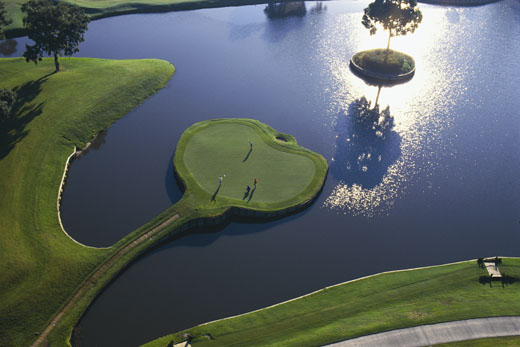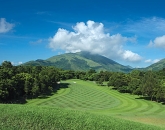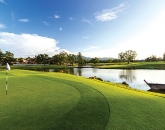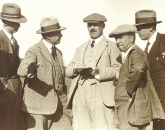 One interesting feature of the routing of the course is that no consecutive holes run in the same direction. While the par-five second seems to be just an elongated version of the first, the change is wind direction means the holes play much differently to each other. You find this time and time again on the Stadium Course. Gauging the shifting breezes correctly can be the difference between a respectable round and a train wreck, at least for a good player: the continual presence of water and devilish greenside hummocks and pot bunkers means any mistimed shot, even one only slightly miscued, is punished. That it’s a brilliant test of golf in beyond question, but it also has to be one of the most mentally trying courses around.
One interesting feature of the routing of the course is that no consecutive holes run in the same direction. While the par-five second seems to be just an elongated version of the first, the change is wind direction means the holes play much differently to each other. You find this time and time again on the Stadium Course. Gauging the shifting breezes correctly can be the difference between a respectable round and a train wreck, at least for a good player: the continual presence of water and devilish greenside hummocks and pot bunkers means any mistimed shot, even one only slightly miscued, is punished. That it’s a brilliant test of golf in beyond question, but it also has to be one of the most mentally trying courses around.
Which brings us nicely to the infamous seventeenth and its island green, a design characteristic that has been copied on dozens if not hundreds of courses the world over. Much has been made of this tiny par-three over the years—and for good reason. At 137 yards it’s comfortably the shortest hole on the course, but that hasn’t prevented many a seasoned pro from seeing their championship chances destroyed by finding the aqua. Such is the potential for disaster that broadcaster NBC devotes ten cameras to the hole during the tournament. But here’s the thing: for the pros at the climax of one of the biggest events in golf the hole represents a supreme psychological challenge; for the amateur, whose round has more than likely already been wrecked by the previous sixteen, the seventeenth offers some light relief. We’re not saying it’s easy, necessarily, but as far as birdie opportunities go, this is certainly one of the better chances out there.
Pages
Click here to see the published article.











